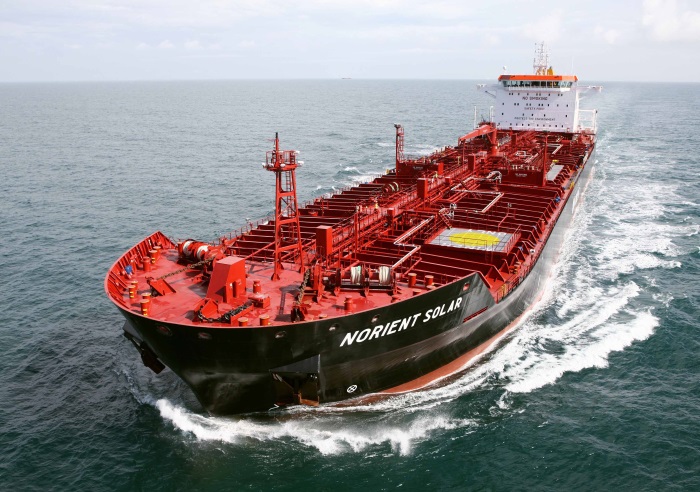The war in Ukraine has spurred a flurry of sales and purchases of oil tankers over the past year as some shipping companies press ahead with moving Russian cargoes while others act to avoid any hint of exposure to sanctions, market participants said March 14.
Many of these deals involve undisclosed buyers as the investors involved want to keep their purchases private due to the ever-looming threat of more stringent sanctions, the sources said.
The number of LR1s, MRs, Aframaxes and Suezmaxes exchanging hands has surged over the course of the war, industry data showed.
“There have definitely been more sales and purchases of tankers since the outbreak of the war than in the previous year,” said a Singapore-based broker involved in such deals.
The number of Suezmax sales of all ages is estimated to have doubled on the year to 103 in 2022, according to the UK-based maritime consultancy VesselsValue, while Aframax sales rose 30% over the same period to 121. For clean tankers, MR sales also rose by a third to almost 350.
Sales in these segments are increasing because they are the ship size of choice for moving Russian cargoes, said an executive with a global commodities trading company. Not all ports in Russia can berth bigger ships such as VLCCs and LR2s, he said.
Market participants cite the example of Russia’s Kozmino port, where every month close to 30 Aframaxes load 100,000-mt cargoes, and the ownership of many of these tankers is opaque and difficult to trace.
While some tanker companies such as Maersk have a strict policy not to carry Russian cargoes, others don’t mind as the price cap regime permits them to do so if the tanker itself does not have Russian ownership or flag.
Prominent companies that load Russian cargoes include Gatik Ship Management. Its executives could not be reached for comment, but VesselsValue said it purchased nine MRs, five LR2s, five Suezmaxes, 16 Aframaxes and a VLCC last year.
That number has increased further to date in 2023, as it now has close to 50 tankers and recently purchased its first dry bulker, a Panamax from Greece’s Technomar, a shipping source said.
Undisclosed owners
The broker in Singapore said many tanker purchases were now to undisclosed buyers. “We know the sellers but not the buyers and even though the articles of the sale-purchase agreement explicitly mention that after the ship exchanges hands it should not call on ports under the purview of sanctions, reality shows otherwise.”
One way the buyers remain undisclosed is they utilize the services of low-profile brokers and escrow agents that specialize in such deals as they do not want to appear on the radar for sanctions.
An escrow agent based in Singapore said his company provides a clearing and transaction closing service for sales and purchases of ships fully compliant with international law, but many clients prefer to use the services of others to keep their deals private.
VesselsValue estimates the number of VLCCs with undisclosed buyers increased to 19 last year from just two in 2021. The corresponding increase in such deals for Suezmaxes was to 14 from 4 and for Aframaxes to 10 from 6, its data showed. For clean MRs, the increase was threefold to 27.
For government authorities and international financiers, the details of these buyers would still be available because every ship has a UBO, or Ultimate Beneficiary Owner. Under rules of maritime trade, when a ship changes hands, passport details of the UBO have to be mentioned in the Memorandum of Agreement, or MOA.
Despite these rules, such ownership of tankers is not being called into question because the price cap imposed on Russian oil cargoes has, in an indirect way, helped it circumvent the sanctions, shipping industry sources said.
As long as logistics and other services of companies in the G7 and Australia are not used and the price cap is observed, these oil cargoes can be moved without breaching sanctions, a US State Department official told S&P Global Commodity Insights.
However another US government official added: “It will be misleading to say that the Russians benefit from the price cap; they instead get penalized and their economy gets hurt because they cannot then use the logistical services such as international insurance.”
Many ships carrying Russian oil get insurance cover from Moscow’s own P&I clubs, carry flags of other countries, are part of other registries and their UBOs hold passports of “safe haven” countries, a maritime insurance executive said.
Rising values
The increasing frequency in the buying and selling of oil tankers has pushed up prices across the board in this high-value asset class.
A 2007-built Aframax Aether was purchased in February by a Persian Gulf-based buyer at around $37 million, according to shipping sources. Two weeks before Russia invaded Ukraine, a deal for a tanker of similar size and age was done at $17 million, they said.
The price of a 10-year-old LR2 has doubled to around $56 million from a year earlier and of VLCCs of the same age has risen by two-thirds in a year to $75 million, according to VesselsValue.
“Many of these sales and purchases illustrate the division of the tanker fleet into those moving Russian and non-Russian cargoes,” an escrow agent said.
While moving Russian cargoes is permissible with the price cap, this two-tier division in the tanker fleet is occurring because many are concerned that sanctions may be made more stringent as the war continues, market sources said.
Source: Hellenic Shipping News






